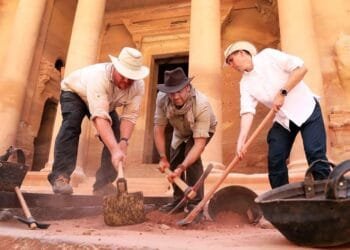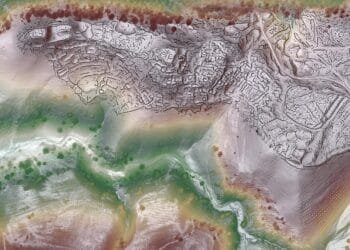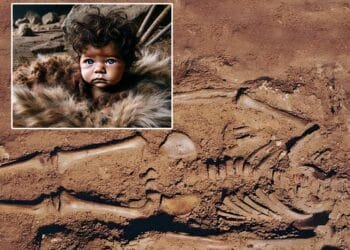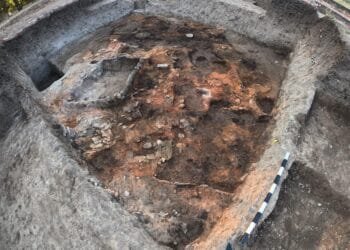Recent findings from the Baishiya Karst Cave on the Tibetan Plateau have provided significant insights into the life of the Denisovans, an extinct species of ancient human.

A study published in Nature reveals that these archaic humans survived in the harsh, high-altitude environment of the Tibetan Plateau for over 100,000 years, demonstrating remarkable adaptability to extreme climatic conditions.
The Baishiya Karst Cave, located at an elevation of 3,280 meters (10,700 feet) above sea level, has been the site of extensive archaeological research led by an international team from Lanzhou University, the University of Copenhagen, and other institutions. The team’s work involved analyzing over 2,500 bone fragments unearthed from the cave, many of which belonged to animals such as blue sheep, wild yaks, marmots, and birds. Among these fragments, the researchers identified a rib bone belonging to a Denisovan individual, dating back between 48,000 and 32,000 years ago.
This discovery marks the youngest Denisovan fossil found to date, suggesting that Denisovans inhabited the region more recently than previously believed. Dr. Geoff Smith, a zooarchaeologist at the University of Reading and co-author of the study, said: “Our study reveals new information about the behavior and adaptation of Denisovans both to high altitude conditions and shifting climates. We are only just beginning to understand the behavior of this extraordinary human species.”

The research team employed a novel technique called Zooarchaeology by Mass Spectrometry (ZooMS) to identify the bone fragments. This method analyzes bone collagen to differentiate between species. Dr. Huan Xia of Lanzhou University explained: “ZooMS allows us to extract valuable information from often overlooked bone fragments, providing deeper insight into human activities.”
The analysis revealed that the Denisovans not only hunted and butchered a wide range of animals but also used their bones to create tools. The diversity of animal species found in the cave indicates a rich grassland environment with some forested areas, similar to the present-day landscape. Dr. Jian Wang of Lanzhou University noted, “Current evidence suggests that it was Denisovans, not any other human groups, who occupied the cave and made efficient use of all the animal resources available to them throughout their occupation.”

The study’s findings paint a picture of Denisovan life on the Tibetan Plateau. The presence of cut marks and notches on many bones suggests that Denisovans were adept at processing animals for meat, marrow, and hides. They likely used these materials for food and clothing, enabling them to survive in the frigid conditions of the plateau.
The Denisovans were first identified in 2010 from a fragment of a finger bone found in Denisova Cave in Siberia. Genetic analyses revealed that they were closely related to Neanderthals and interbred with both Neanderthals and modern humans. Traces of Denisovan DNA in present-day people suggest that they once lived across much of Asia.
In 2019, a jawbone with teeth found in Baishiya Karst Cave was identified as Denisovan, dating back at least 160,000 years. This discovery was followed by the identification of Denisovan DNA in sediments from the cave, further confirming their presence in the region.

The latest findings from Baishiya Karst Cave underscore the Denisovans’ ability to adapt to high-altitude environments and their resilience in the face of climatic fluctuations. Dr. Dongju Zhang, an archaeologist and professor at Lanzhou University, remarked, “We know that the Denisovans lived, occupied the cave and this Tibetan plateau for such a long time, we really want to know, how did they live there? How did they adapt to the environment?”
The study opens up new avenues for understanding the Denisovans’ interactions with other human groups, particularly modern humans who were dispersing across the Eurasian continent around the same time. Dr. Welker suggested that future research could shed light on whether Denisovans and modern humans interacted on the Tibetan Plateau.




























